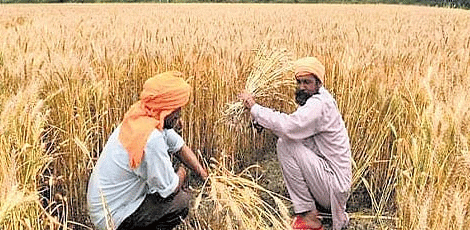India’s wheat production faces significant challenges as unseasonably high temperatures in February 2025 jeopardize crop yields. The India Meteorological Department (IMD) reports that maximum temperatures in key wheat-producing regions are currently 2-6°C above normal, with minimum temperatures elevated by 1-3°C. This climatic anomaly raises concerns about the potential impact on wheat crops during the critical grain-filling stage.
Historically, elevated temperatures during the grain-filling period have been detrimental to wheat yields. Studies indicate that each 1°C increase can result in a 3-17% yield reduction in South Asia, including India. In 2022, a sudden temperature spike in mid-March led to a 10-15% decline in wheat yields, reducing production from an estimated 110 million metric tons (MMT) to 99 MMT. This prompted the Indian government to ban wheat exports to safeguard domestic supply.
The current temperature surge threatens to replicate these adverse effects, potentially leading to a fourth consecutive year of reduced wheat production. Such a scenario could compel India to lower or remove its 40% import tax to mitigate domestic shortages.
In response to these challenges, the Indian government has increased the minimum support price for wheat by 6.6% to ₹2,425 per 100 kg for the 2025 season. This initiative aims to encourage farmers to expand wheat cultivation and reduce reliance on imports.
Despite these efforts, the combination of rising temperatures and consecutive years of suboptimal harvests has led to a surge in wheat prices, reaching a nine-month high of ₹28,000 per metric ton. Flour mill owners are urging the government to release wheat stocks from reserves to stabilize prices.
The unseasonably high temperatures in February 2025 pose a significant threat to India’s wheat yields. Proactive measures, including price adjustments and strategic release of reserves, are essential to mitigate the impact on food security and the agricultural economy.
Error



